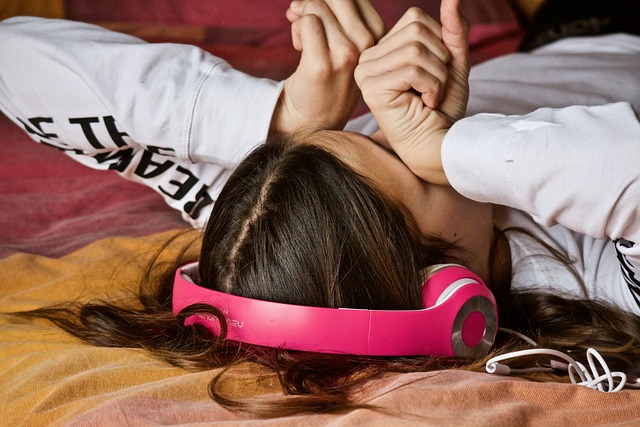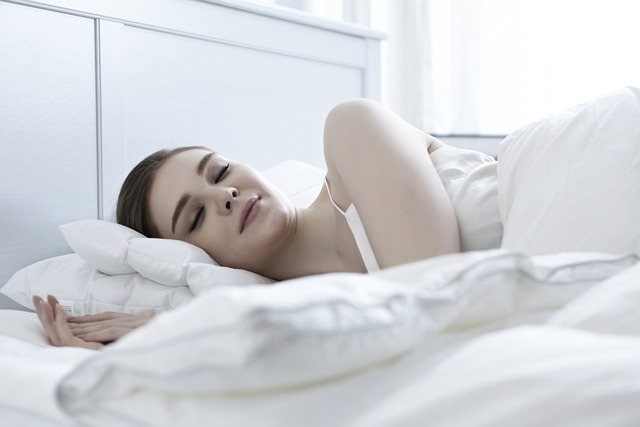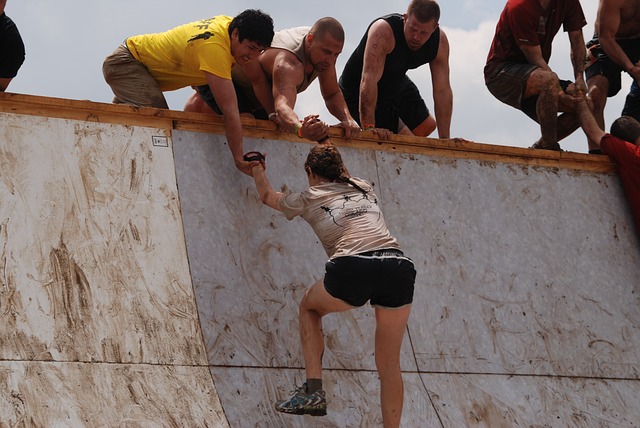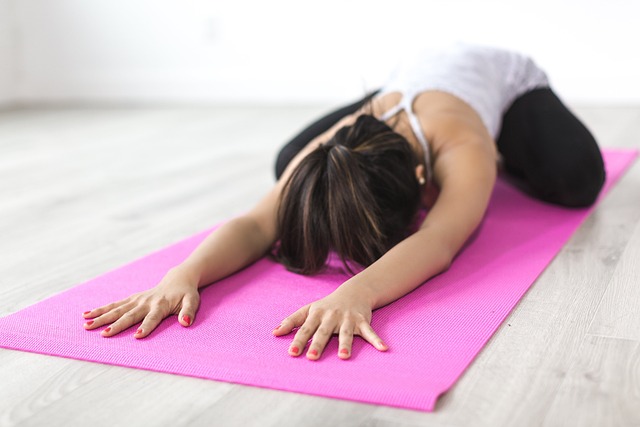Table of Contents
- Introduction
- The Power of Self Hypnosis for Restful Sleep
- Why Self Hypnosis Works for Sleep
- Understanding the Mind-Body Connection
- Unravelling the Science Behind Sleep
- The Importance of Quality Sleep
- Common Sleep Challenges Faced by Many
- How Self Hypnosis Addresses Sleep Issues
- Preparing for Self Hypnosis
- Creating a Soothing Sleep Environment
- Establishing a Bedtime Routine
- The Role of Mindfulness in Sleep Hypnosis
- Getting Started with Self Hypnosis
- Finding a Comfortable Position
- Focusing on Breathing and Relaxation Techniques
- The Art of Guided Visualisation
- Tailoring Your Self Hypnosis Script
- Identifying Personal Sleep Obstacles
- Crafting Positive and Empowering Affirmations
- Enhancing Visualisation for Sleep Success
- Practising Self Hypnosis for Sleep
- Consistency is Key
- Overcoming Challenges and Setbacks
- Tracking Sleep Progress and Adjusting Techniques
- Advanced Self Hypnosis Techniques
- Incorporating Progressive Muscle Relaxation
- Exploring Time Distortion for Restorative Sleep
- Deepening the Self Hypnotic State
- Self Hypnosis for Specific Sleep Concerns
- Managing Stress and Anxiety through Hypnosis
- Overcoming Insomnia with Self Hypnosis
- Combating Sleep Disruptions and Nightmares
- Combining Self Hypnosis with Other Sleep-Enhancing Practices
- Complementary Relaxation Techniques (e.g., Meditation, Yoga)
- The Role of Nutrition and Exercise in Better Sleep
- Creating a Holistic Sleep Improvement Plan
- Safety and Best Practices
- When to Avoid Self Hypnosis for Sleep
- Consulting with a Professional Hypnotherapist
- Understanding the Limits of Self Hypnosis
- Frequently Asked Questions
- Sharing Success Stories and Testimonials
- Encouraging Positive Community Engagement
- Conclusion
Introduction
Hey there, tired souls! Are you tired of counting sheep and chasing elusive Z’s every night? Well, let me introduce you to a powerful technique that can revolutionise your sleep experience – self-hypnosis! As a Personal Development Coach and Hypnotherapist, I’ve seen firsthand how self-hypnosis can work wonders for achieving restful sleep. Imagine drifting off to dreamland effortlessly, leaving behind the stresses of the day.
The Power of Self Hypnosis for Restful Sleep
Self-hypnosis allows you to tap into the incredible potential of your subconscious mind, guiding you into a state of relaxation and serenity that paves the way for rejuvenating sleep. So, get ready to embark on this journey of self-discovery and welcome a well-deserved restful slumber into your life!
Why Self Hypnosis Works for Sleep
Now, you might be curious about why self-hypnosis is so effective for improving sleep. Well, let me enlighten you! Sleep is not just a time of rest; it’s a crucial process that supports our physical, mental, and emotional well-being. Unfortunately, the demands of modern life often disrupt this natural process, leading to common sleep challenges like insomnia, restlessness, or waking up feeling groggy. Self-hypnosis works wonders for sleep because it accesses the subconscious mind, where deep-rooted patterns and beliefs reside. By skilfully guiding your thoughts and imagination, self-hypnosis can address the underlying causes of sleep issues, releasing pent-up stress and inviting tranquillity to take over. With self-hypnosis, you have the power to transform your relationship with sleep and awaken to brighter, more energised mornings.
Understanding the Mind-Body Connection
Ah, the fascinating mind-body connection! This intricate dance between our thoughts, emotions, and physical sensations profoundly impacts our well-being, including our sleep. When we’re stressed or anxious, our bodies often respond with tense muscles and restless thoughts, making it difficult to unwind and embrace sleep. Self-hypnosis bridges the gap between our conscious and subconscious minds, allowing us to access deeper states of relaxation and tranquillity. As you enter a hypnotic state, your brain waves slow down, and your body experiences a profound sense of calm. By tapping into this mind-body connection through self-hypnosis, you can create the perfect conditions for sleep, bid farewell to worries, and invite sweet dreams to guide you through the night. So, let’s dive into the magic of self-hypnosis and unlock the power within you to reclaim your sleep and overall wellness.
The Importance of Quality Sleep
Sleep, the unsung hero of well-being! Let’s take a moment to appreciate the vital role of quality sleep in our lives. Beyond feeling refreshed, sleep plays a critical role in restoring and rejuvenating our bodies and minds. During slumber, the body repairs tissues, synthesises essential hormones, and consolidates memories, supporting our ability to learn and retain information. Moreover, quality sleep bolsters our immune system, helping us ward off illnesses and be at our best. By embarking on the journey of self-hypnosis for sleep, you can unlock the door to a deeper, more revitalising slumber, nurturing both your mind and body.
Common Sleep Challenges Faced by Many
Common sleep challenges are faced by many. If you’ve ever experienced trouble falling asleep, staying asleep, or waking up feeling unrefreshed, rest assured that you’re not alone. Our fast-paced, modern lifestyles often inundate us with stress and constant stimulation, making it difficult to unwind and find peace at night. However, the power of self-hypnosis offers a natural and empowering solution to tackle these sleep challenges head-on. By addressing the underlying causes of sleep difficulties through self-hypnosis, you can build a solid foundation for better sleep habits and improved well-being.
How Self Hypnosis Addresses Sleep Issues
Self-hypnosis is a remarkable tool that grants you access to your subconscious mind—the realm of deep-seated thoughts, emotions, and beliefs. It works by guiding your mind into a state of focused concentration, akin to when you’re deeply engrossed in a book or a favourite activity. In this relaxed state, your mind becomes more receptive to positive suggestions and visualisations, creating an opportunity to reframe negative thought patterns and associations with sleep. Through the use of affirmations and guided visualisations during self-hypnosis, you can instil a profound sense of calm and relaxation, releasing worries and allowing your mind and body to prepare for a peaceful slumber. The beauty of self-hypnosis lies in its adaptability, as it can be customised to address your specific sleep challenges, making it a versatile and personalised tool for better sleep.
Creating a Soothing Sleep Environment
To begin your self-hypnosis journey, it’s crucial to create a peaceful sleep environment that promotes relaxation. Your sleep space should be a sanctuary of serenity, free from distractions and electronic devices. Dim the lights, play some soothing music or nature sounds, and consider incorporating aromatherapy with calming scents like lavender or chamomile. Soft, comfortable bedding can further enhance the inviting atmosphere. Creating this tranquil sleep environment signals to your mind that it’s time to unwind and prepare for a restful night’s sleep.
Establishing a Bedtime Routine
A consistent bedtime routine can work wonders in preparing your mind and body for sleep. Develop a series of calming activities that you engage in before bedtime to signal to your brain that it’s time to wind down. This routine can include activities like reading a book, taking a warm bath, or practising gentle stretches or yoga. Whatever you choose, the key is to find activities that help you relax and release the stresses of the day. By adopting a consistent bedtime routine, you create a sense of predictability that can lull your mind into a state of tranquillity and make falling asleep more effortless.
The Role of Mindfulness in Sleep Hypnosis
Mindfulness is a powerful ally in the realm of sleep hypnosis. Mindfulness involves bringing your attention to the present moment, acknowledging your thoughts and feelings without judgment. It can be a helpful tool in quieting a busy mind that may be hindering sleep. Incorporate mindfulness practices into your day, such as meditation or deep breathing exercises. As you engage in self-hypnosis for sleep, mindfulness can assist in keeping you focused and relaxed, allowing you to embrace the hypnotic state more effectively. By practising mindfulness regularly, you develop a greater awareness of your thoughts and emotions, making it easier to let go of any worries that might be keeping you awake.
Finding a Comfortable Position
To begin your self-hypnosis practice, find a comfortable position in bed or a cozy chair. Close your eyes, take a few deep breaths, and allow your body to relax. The goal is to let go of physical tension and mental clutter, paving the way for a serene hypnotic state.
Focusing on Breathing and Relaxation Techniques
Once you’re settled into your chosen position, shift your focus to your breath. Take slow, deep breaths, allowing the rhythm of your breath to soothe your mind. With each exhalation, release any lingering tension. You can even try incorporating a simple counting technique—inhale for a count of four, hold for a count of four, and exhale for a count of four. This helps center your thoughts and prepares you for the self-hypnosis experience.
The Art of Guided Visualisation
Visualization is a powerful tool in self-hypnosis for sleep. Imagine yourself in a serene and calming environment, such as a peaceful beach, a lush forest, or a cozy mountain cabin. Engage all your senses to make the visualization as vivid and real as possible. Feel the warm sand beneath your feet, hear the gentle sound of waves, or smell the fresh forest air. As you immerse yourself in this mental retreat, allow any worries or tensions to dissipate, inviting relaxation to flow through your entire being. Guided visualization can lead you into the hypnotic state, setting the stage for a night of blissful slumber.
Identifying Personal Sleep Obstacles
One of the beauties of self-hypnosis is its adaptability to your specific needs. Take some time to reflect on your personal sleep challenges. Are you often plagued by stress, anxiety, or racing thoughts before bed? Do physical discomforts keep you awake? Identifying these obstacles will help you tailor your self-hypnosis script to address your unique concerns.
Crafting Positive and Empowering Affirmations
Craft positive and empowering affirmations that resonate with your sleep goals. Use affirmations that counter any negative beliefs or worries you may have about sleep. For example, if you struggle with anxiety before bed, create an affirmation like, “I am calm, and my mind is at peace. I release all tension and embrace tranquility.” Repeating these affirmations during self-hypnosis can reprogram your subconscious mind, helping you establish healthier sleep patterns.
Enhancing Visualization for Sleep Success
Enhance your guided visualization during self-hypnosis by incorporating elements that contribute to restful sleep. Visualize your body becoming increasingly relaxed and comfortable. Picture yourself effortlessly drifting into a deep and restorative slumber, where you wake up feeling refreshed and ready to take on the day. Embrace the positive emotions associated with a good night’s sleep, such as joy and contentment. The more vivid and emotionally charged your visualization becomes, the more profound its impact on your subconscious mind.
Consistency is Key
As with any new skill, consistency is vital in mastering self-hypnosis for sleep. Make it a habit to practice regularly, even if you don’t experience immediate results. Like a muscle that gets stronger with exercise, your mind becomes more receptive to self-hypnosis with consistent practice.
Overcoming Challenges and Setbacks
Be patient with yourself and understand that the journey to better sleep may have some bumps along the way. If you encounter challenges or setbacks, don’t get discouraged. Treat them as opportunities for growth and learning. Use these moments to refine your self-hypnosis techniques and affirmations, making adjustments as needed to improve your practice.
Tracking Sleep Progress and Adjusting Techniques
Keep a sleep journal to track your self-hypnosis progress and sleep patterns. Record any improvements in your sleep quality and how you felt upon waking up. Monitoring your progress helps you identify what works best for you and gives you insights into areas that may require additional focus. Use this information to adjust your self-hypnosis techniques and affirmations, making them more tailored to your evolving needs.
Incorporating Progressive Muscle Relaxation
Progressive muscle relaxation is a technique that involves tensing and then relaxing different muscle groups in your body. Start at your feet and work your way up, tensing each muscle group for a few seconds before releasing. Progressive muscle relaxation can help release physical tension and deepen your relaxation during self-hypnosis, preparing your body for a more peaceful sleep experience.
Exploring Time Distortion for Restorative Sleep
Time distortion is a fascinating aspect of self-hypnosis. When in a hypnotic state, you may perceive time differently, feeling like minutes pass by in seconds or vice versa. Embrace this time distortion as a gift, allowing yourself to experience an extended period of relaxation and rejuvenation during your self-hypnosis practice. Trust that your subconscious mind knows the ideal timing for your sleep preparation.
Deepening the Self Hypnotic State
To deepen your self-hypnotic state, you can use a technique called “fractionation.” This involves briefly bringing yourself out of the hypnotic state and then reentering it. With each cycle, your mind becomes more familiar with the process, allowing you to enter a deeper state of relaxation each time you return to self-hypnosis. Fractionation can lead to a profoundly restorative experience, making it an excellent tool to enhance your sleep preparation.
Self Hypnosis for Specific Sleep Concerns
Self-hypnosis can be adapted to address specific sleep concerns beyond the general goal of achieving restful sleep. If stress and anxiety are major factors affecting your sleep, consider using self-hypnosis techniques specifically designed to manage these emotions.
Managing Stress and Anxiety through Hypnosis
One common use of self-hypnosis is stress and anxiety management. During self-hypnosis, you can replace negative thought patterns with positive suggestions, fostering a sense of calm and tranquility. This, in turn, helps reduce stress and anxiety, making it easier to embrace a peaceful sleep state.
Overcoming Insomnia with Self Hypnosis
Insomnia is a prevalent sleep disorder that can significantly impact daily functioning. Self-hypnosis can be a valuable tool in overcoming insomnia by addressing the root causes and facilitating relaxation. Through regular self-hypnosis practice, you can create a positive association with sleep, promoting better sleep habits and breaking the cycle of insomnia.
Combating Sleep Disruptions and Nightmares
Nightmares and sleep disruptions can be distressing and hinder restorative sleep. Using self-hypnosis techniques specifically tailored to address these issues can help alleviate their impact on your sleep. By introducing positive and empowering imagery during self-hypnosis, you can create a sense of safety and comfort that counters the negative emotions associated with nightmares.
Combining Self Hypnosis with Other Sleep-Enhancing Practices
Combining self-hypnosis with other sleep-enhancing practices can amplify the positive effects on your sleep quality. Integrating relaxation techniques like meditation or gentle yoga can complement self-hypnosis, providing additional avenues for relaxation and stress reduction.
Complementary Relaxation Techniques (e.g., Meditation, Yoga)
Exploring relaxation techniques like meditation and yoga can further enhance your sleep journey. Engaging in these practices during the day can create a sense of calm that carries over into your self-hypnosis for sleep, helping you achieve a deeper state of relaxation and tranquility.
The Role of Nutrition and Exercise in Better Sleep
Proper nutrition and regular exercise play a significant role in supporting healthy sleep patterns. Avoid heavy meals close to bedtime, as they can disrupt digestion and make it challenging to fall asleep. Instead, opt for light snacks that promote relaxation, such as warm milk or a banana. Regular physical activity can also positively impact sleep quality, so find enjoyable ways to move your body during the day.
Creating a Holistic Sleep Improvement Plan
A holistic approach to sleep improvement involves addressing various aspects of your lifestyle and well-being. By combining self-hypnosis with other positive habits, you create a comprehensive sleep plan that nurtures your mind, body, and spirit.
Safety and Best Practices
As with any personal development practice, safety and responsible use are essential. Self-hypnosis is generally safe for most people. However, there are some circumstances where it is best to avoid self-hypnosis for sleep.
When to Avoid Self Hypnosis for Sleep
While self-hypnosis is generally safe, it is essential to exercise caution under certain conditions. Avoid practicing self-hypnosis while driving, operating machinery, or engaging in any activity that requires your full attention. It’s crucial to dedicate time to self-hypnosis when you can fully relax and focus without distractions.
Consulting with a Professional Hypnotherapist
If you find yourself struggling to make progress with self-hypnosis or experience persistent sleep issues, consider seeking the guidance of a professional hypnotherapist. A hypnotherapist can work with you one-on-one to tailor the self-hypnosis process to your specific needs and challenges.
Understanding the Limits of Self Hypnosis
Self-hypnosis, while powerful, does have its limitations. It may not be a suitable solution for severe sleep disorders or underlying medical conditions. Understanding the boundaries of self-hypnosis empowers you to seek additional support or alternative treatments when needed.
Frequently Asked Questions
As you embark on your self-hypnosis journey for better sleep, you may have some questions along the way. Here are some frequently asked questions and their answers to guide you.
Sharing Success Stories and Testimonials
If you’ve experienced success with self-hypnosis for sleep, consider sharing your story with others. Your experience may inspire and encourage those who are struggling with their sleep to explore the transformative power of self-hypnosis.
Embracing the Journey of Self Hypnosis
Remember that self-hypnosis is a skill that improves with practice and patience. Be kind to yourself throughout the process, and acknowledge the efforts you make toward better sleep and overall well-being. As you continue to practice self-hypnosis, celebrate each small victory and embrace the positive changes it brings to your life.
Setting an Intention for Your Self Hypnosis Practice
Before you begin your self-hypnosis practice, take a moment to set a clear intention for what you wish to achieve with your sleep improvement journey. Setting an intention aligns your focus and energy with your desired outcomes, making your self-hypnosis practice even more effective.
Conclusion and Final Thoughts
As we conclude this guide, I want to express my admiration for your commitment to better sleep and well-being. By exploring the world of self-hypnosis, you’ve embarked on a transformative journey that will lead you to a more restful and rejuvenating sleep experience. Embrace this newfound knowledge, trust in the power of your mind, and let self-hypnosis pave the way for nights of peaceful slumber and days of boundless vitality. Sweet dreams!
Additional Resources:
Disclaimer: The information provided in this guide is for educational purposes only and is not intended as a substitute for professional medical advice, diagnosis, or treatment. Always seek the advice of your physician or other qualified health provider with any questions you may have regarding a medical condition. Never disregard professional medical advice or delay in seeking it because of something you have read in this guide.






